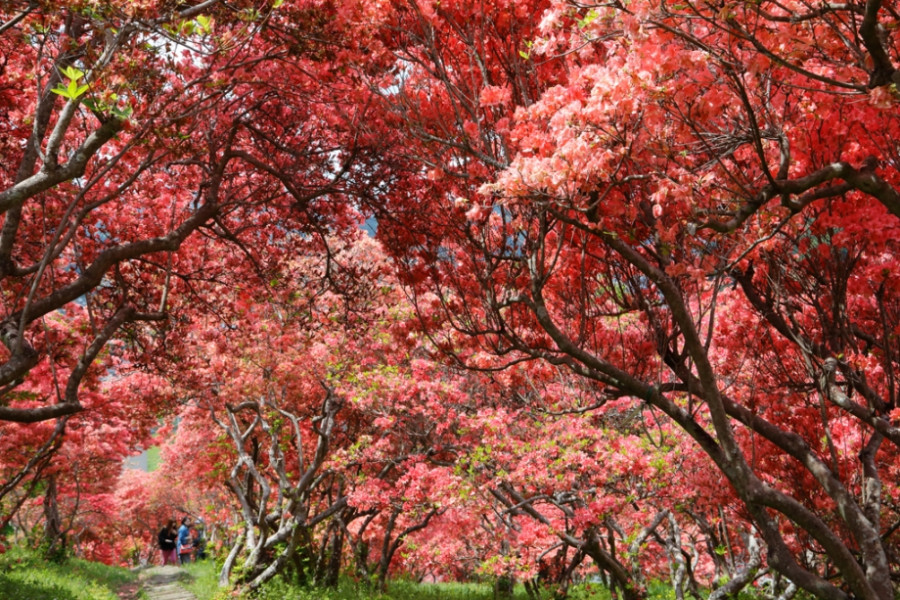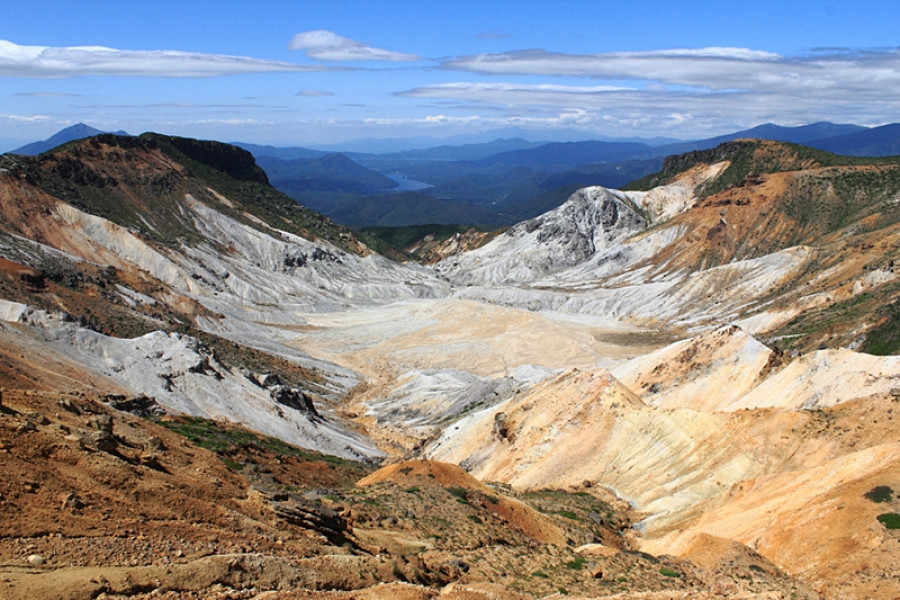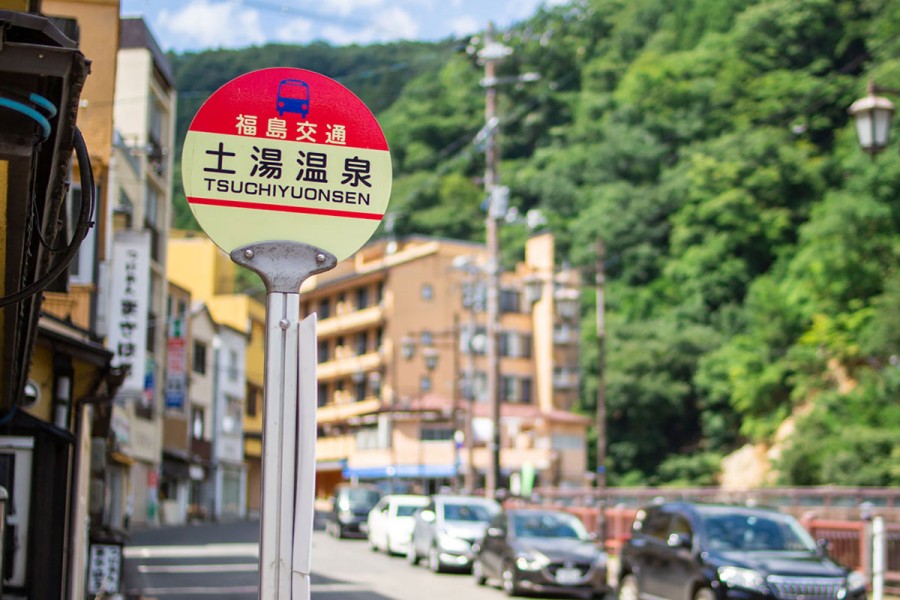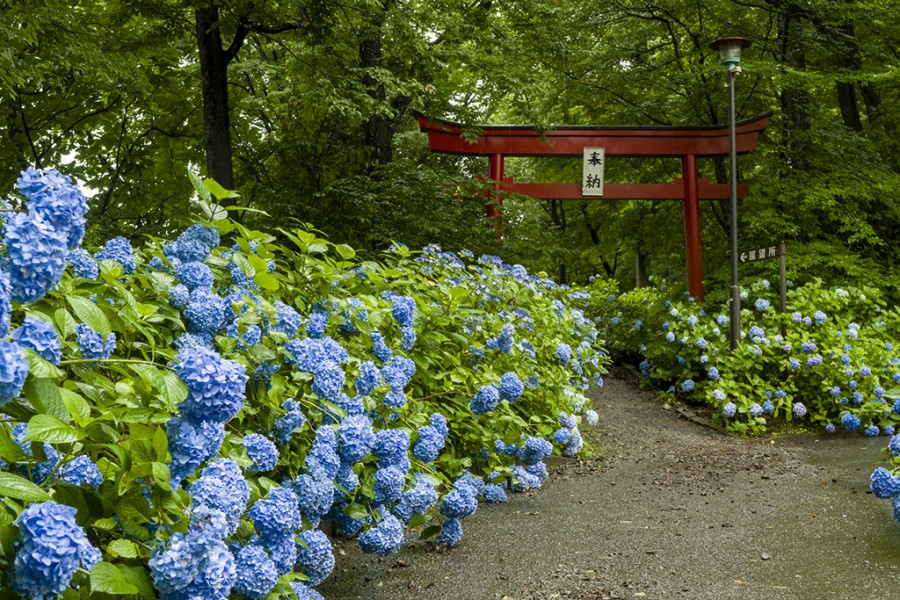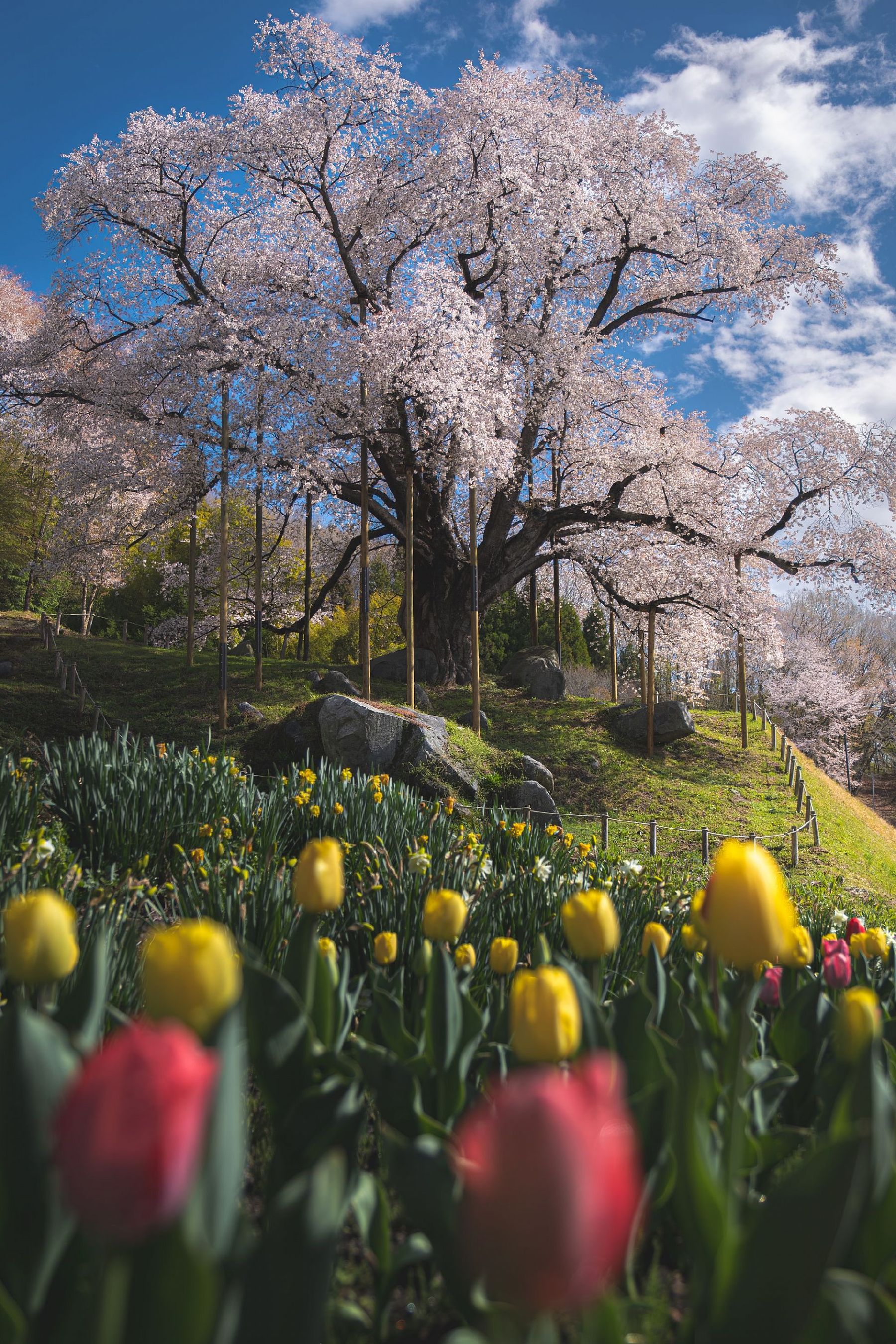Mt. Adatara is actually made up of multiple active volcanoes that form a broad mountain. It last erupted in 1996. Poems in the book Chieko-sho by Kotaro Takamura (1883-1956) helped make the mountain famous.

The summit of Mt. Adatara stands at an altitude of 1700 m, stretching about 9 kilometers in a north-to-south direction. Views of Mt. Adatara are lovely in and of themselves, but the views that visitors have of the surrounding area once they reach the summit are breathtaking. Chosen as one of Japan’s top 100 mountains, as well as one of the top 100 mountains for flowers, a view spot at an altitude of 1300 m can be accessed by gondola lift. This means that it is relatively easy to climb even for beginners.

On summer evenings, a light-up event inspired by the Milky Way and the flowers of Mt. Adatara is held, gracing those scaling the mountain by a gondola lift with a spectacular view. In autumn, visitors are afforded a stunning view of autumn leaves making it a popular place for scenic momiji-gari (autumn leaf viewing).
Kurogane-goya Mountain Lodge (temporarily closed as of August 2023) is a rest stop for visitors (it serves as lodging for those on long hikes). Stay here overnight to sample the lodge's famous curry, which is reserved for overnight guests only. The lodge’s public hot spring facility uses naturally-sourced, cloudy hot spring water.
